Old Actros lives on
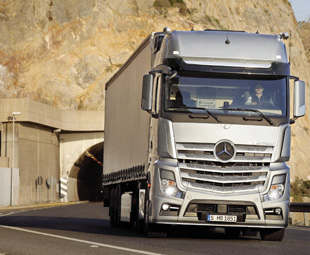
In his monthly review of global news for local truckers, FRANK BEETON reports that the current model Mercedes-Benz Actros will continue alongside its all-new sibling, takes the Ford Cargo story another stage further, examines future prospects for the legendary ACCO, records the arrival of UD’s new Condor cruiserweights in Australia, and reviews some discussion on longer semi-trailers in the UK.
A report from the launch of the new Mercedes-Benz Actros in June states Daimler AG will continue to produce the current Actros model for the European market until the enforcement of Euro 6 emission controls commences in January 2014, and that it “would continue to be offered” in markets with inferior fuel quality, such as the Middle East, Africa and Asia.
This revelation suggests that it is not a feasible proposition to offer a specially adapted version of Daimler’s new HDEP global engine family to operate on high sulphur content diesel fuel, and it seems likely that vehicles powered by this engine family will not enter the South African market until the local fuel quality issue has been progressed to a standard compatible with, at least, Euro 5. As reported last month, Mercedes-Benz will market a Euro 5 version of New Actros, so that level appears to be the entry point at which the model can be considered for local consumption.
If this supposition is correct, it could also hold back the local introduction of HDEP-powered Freightliner and Fuso models, and any other new Daimler trucks configured specifically for the inline-engine layout. The same report states that a version of New Actros, powered by a 466 kW (625 hp),
3 000 Nm, 15,6-litre engine, will become available from December 2014. This displacement matches the Detroit Diesel DD16 variant of the HDEP engine family already available with ratings up to 450 kW (600 hp) in North America, but the timing suggests that some additional development of the basic design is still necessary to deliver the increased power output under European market and regulatory conditions.
THE FORD CARGO STORY GETS BIGGER
You read it first in Global Focus! Over the past few months, we’ve been digging out some interesting information about new Ford Cargo trucks manufactured in Turkey and South America. After our initial surprise that elements of the Ford Motor Company were still active in the real truck market, we started to contemplate the possibility that the Blue Oval was about to reclaim its former global position as a serious manufacturer of something bigger than “macho” American pickups. The most intriguing part of all this, however, was that, whereas the Brazilian operation had taken the logical route and bought-in its engines from Cummins, Ford Otosan in Turkey had gone the whole hog and even developed its own in-house Ecotorq engine range for its impressive truck line-up!
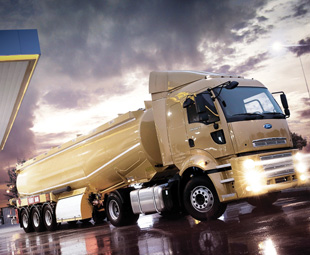 Media reports published in Turkey at the end of June ratcheted this whole story up a further notch. They revealed the Ford Otosan plant in Eskişehir, together with Ford Brazil’s Sao Paulo facility, would become global sources for Ford trucks, and that export activities were planned for expansion from the present level of 17 countries, to an astonishing 65 markets. Annual volumes of 40 000 units from the Brazilian source, and 20 000 Turkish units were mentioned, and it was also stated the two operations would provide complementary inputs, with Brazil handling research and development, while Ford Otosan would ship components to the South American operation.
Media reports published in Turkey at the end of June ratcheted this whole story up a further notch. They revealed the Ford Otosan plant in Eskişehir, together with Ford Brazil’s Sao Paulo facility, would become global sources for Ford trucks, and that export activities were planned for expansion from the present level of 17 countries, to an astonishing 65 markets. Annual volumes of 40 000 units from the Brazilian source, and 20 000 Turkish units were mentioned, and it was also stated the two operations would provide complementary inputs, with Brazil handling research and development, while Ford Otosan would ship components to the South American operation.
Without repeating the whole story all over again, it seemed incredulous, at first, that Ford would wish to start rebuilding the truck empire that it largely sold to the likes of Iveco and Daimler not that long ago. However, stranger things have happened, and we are now dealing with “One Ford”, the new identity that has shrugged off its former persona as a “hold-all” containing Volvo, Aston Martin, Land Rover, and Jaguar, and is fiercely re-asserting its position as a stand-alone brand, even to the point of scaling down its formerly close association with Mazda. This strategy may well have space for a truck element, which has the potential to provide important additional visibility, and to broaden the business footprint of its dealer body. The intriguing question now will be whether South Africa, with its unique and challenging transportation environment, has a place in this strategy?
IS ACCO GOING DOWN?
There are many people in the South African trucking industry who will remember the International ACCO with affection. This product of International Harvester’s Australian operation first arrived here in 1970, although its roots went back all the way to 1952, when the Dandenong factory was first opened, and a unique family of locally manufactured, indigenous International models named ACCO (Australian Model C Cab Over), were developed to combine US-style truck engineering with Australian operators’ configuration preferences. Although unquestionably ugly, the ACCO 1820 established a reputation as a cost-effective, no-nonsense workhorse, and the truck found ready acceptance with many South African operators.
International Harvester per se, which had also been involved in agricultural machinery manufacture, closed in 1986, and its truck manufacturing activities were reconstituted in new entities named Navistar International and the International Truck and Engine Corporation. The Australian assets, including the Dandenong plant, a well-established distribution network, and the rights to the indigenous ACCO range of trucks, were acquired by Iveco Trucks Australia in 1992. ITA subsequently continued to manufacture and market ACCO models successfully, and rebranded them as “Iveco” products in 2002. This product line has maintained its utilitarian image, and has since been mainly sold for multi-axled refuse compactor and truck mixer applications.
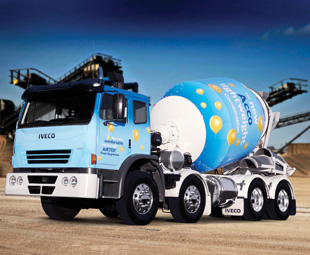 With the exception of the well-entrenched ACCO series, ITA has worked hard to develop its Australian market presence, even to the point of developing the unique, locally-engineered PowerStar conventional (bonneted) truck-tractor, first introduced in 1998 in radical and bizarrely overstyled format. Subsequently, it was redesigned with a considerably more stylish cab adapted from the forward-control European Stralis structure, combined with a locally-engineered bonnet/front wing assembly. Recent power choices have included Iveco’s own Cursor 13 engine series, or bought-in Cummins ISX units. Despite these efforts, ITA has only secured a modest share of the Australian market, capturing 7,4% of the heavy duty (over 15,5 ton GVM) segment in 2010. This has reportedly left Iveco dependent on its substantial ACCO volumes for the continued viability of its Australian manufacturing operation.
With the exception of the well-entrenched ACCO series, ITA has worked hard to develop its Australian market presence, even to the point of developing the unique, locally-engineered PowerStar conventional (bonneted) truck-tractor, first introduced in 1998 in radical and bizarrely overstyled format. Subsequently, it was redesigned with a considerably more stylish cab adapted from the forward-control European Stralis structure, combined with a locally-engineered bonnet/front wing assembly. Recent power choices have included Iveco’s own Cursor 13 engine series, or bought-in Cummins ISX units. Despite these efforts, ITA has only secured a modest share of the Australian market, capturing 7,4% of the heavy duty (over 15,5 ton GVM) segment in 2010. This has reportedly left Iveco dependent on its substantial ACCO volumes for the continued viability of its Australian manufacturing operation.
ACCO support from the waste handling industry, in particular, has been very strong, and its combination of basic engineering, well-developed dual control (left and right-hand steering), and appropriate configuration availability have kept the orders rolling in. At the recent Brisbane Truck Show, however, Western Star Trucks Australia (unrelated to the Daimler Trucks family beyond an Antipodean supply agreement) launched the Dennis Eagle Elite 2 specialist refuse unit to the Australian market, and the game was on.
The Eagle product will be imported into Australia in chassis/cab format, powered by the 8,9-litre Cummins ISLe5 engine in 210 or 240 kW (280 or 320 hp) output formats, driving through an Allison 3000-series fully automatic transmission. Two, three and four-axled versions will be available, and dual-steer will be an option on 4×2 and 6×4 models. The distinctive stainless steel cab design is considerably more modern.
Western Star Trucks Australia is reportedly part of the Transpacific Group, which also includes Cleanaway, one of Australia’s major waste handling organisations, as well as Superior Pak, a leading supplier of refuse handling bodywork. The potential for “family business” within the Transpacific Group is, therefore, considerable.
Some Australian industry opinion is that this may not only pose a threat to ACCO, but also to the very viability of ITA’s operation “down under”. Should the Dennis Eagle be successful in substantially penetrating that portion of the waste handling market outside of the Transpacific Group, it could reduce throughput at the Dandenong factory to the point where it is no longer profitable as an independent operation. Such an eventuality would argue heavily against the continuation of ACCO and ProStar production for the Australian market.
Recent suggestions that a more modern version of the ACCO series is being developed could also be compromised by the commercial undesirability of spending large sums of money on a product that is likely to sell in smaller volumes against opposition that was not there previously.
NEW CONDOR LANDS IN OZ
Reading editorial comment in Australian trucking magazines, there has frequently been a sense of incredulity when UD trucks don’t perform in that market as they are expected to do. Everyone agrees that the product is very good, yet, in 2010, the brand trailed all three of its Japanese competitors in the medium duty segment (7,5 to 16,5 ton GVM), capturing 8,5% of the available business, while in the heavy duty category (over 16,5 ton GVM), it could only score 1,9% penetration, once again, by far the worst result of any Japanese marque.
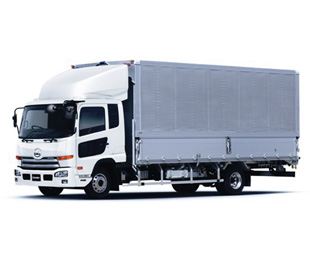 The reasons for this under-performance, certainly when compared to UD’s profile in other important export markets such as South Africa, lies in a combination of an ineffective earlier Antipodean distribution arrangement controlled by a Japanese trading house, and tardy replacement of long-in-the-tooth product, while Isuzu, Hino and Fuso have moved ahead with new model ranges.
The reasons for this under-performance, certainly when compared to UD’s profile in other important export markets such as South Africa, lies in a combination of an ineffective earlier Antipodean distribution arrangement controlled by a Japanese trading house, and tardy replacement of long-in-the-tooth product, while Isuzu, Hino and Fuso have moved ahead with new model ranges.
Since then, things have changed dramatically, with UD having been drawn squarely into Volvo’s global truck family after 2007, and its Australian operation incorporated into the local Volvo setup. One of the first product developments to emerge after these events was the announcement of a long-overdue replacement for the MK and PK cruiserweights, and the reinstatement of in-house power units for this range. Interestingly, while still retaining MK and PK as model designators, UD Australia has decided to adopt the global “pet name” of Condor for this new series, (it has also, for the first time, adopted the Quon label for its flagship GW Series).
Power comes from the new 7,0-litre ECO Fleet diesel, known as the GH7 in Japan, and employing Selective Catalytic Reduction, with output ratings of 180 kW (241 hp) and 206 kW (276 hp), both developed at 2 500 revs/min. Torque delivery has been set at 716 Nm (528 lb ft) or 883 Nm (651 lb ft) at 1 400 revs/min, and there is a choice of six- or nine-speed manual, or Allison fully automatic transmissions. All models in the launch line-up share a 4×2 configuration, with GVM ratings ranging up to 16,5 tons, while 6×2 derivatives are expected to follow later.
The renaming of the erstwhile GW series has been accompanied by specification revisions, and a revival of UD’s historic “CW” nomenclature for individual tandem-drive model designators. Quon range upgrades include the fitment of a driver’s airbag, front under-run protection, additional grab handles to facilitate cab entry and egress, and enhanced infotainment systems. An additional model, designated CW26 400, reportedly aimed at heavy-duty rigid applications, is powered by a 300 kW (400 hp) version of UD’s GE13 engine, driving through an Eaton 13-speed overdrive transmission, and, as its designation implies, is rated at 26 tons GVM.
LONGER SEMIS IN THE UK?
The United Kingdom’s Department for Transport (DfT) has issued a report in which it favours the legalisation of longer semi-trailers, but without any accompanying mass increases (current UK maxima include a maximum overall length for semis of 13,6 metres, and an overriding limit of 44 tons Gross Combination Mass). The report points out that there are numerous instances where vehicles transporting bulky but relatively low-density commodities reach their volume limits under the current regime, but still remain significantly short of the maximum permitted operating mass.
The report’s terms of reference limited the increase in length under consideration to a maximum of 2,05 metres to avoid any conflict with European Union rules, and to remove the risk of accepting longer vehicle combinations, from continental countries, onto UK roads. The proposed length of 15,65 metres is said to provide the same available deck length as a rigid truck and drawbar trailer combination, and to accommodate an additional two rows of standard pallets.
Unfortunately, the recommendation made by this report to adopt 15,65 metres as the new maximum overall length for semi-trailers has encountered stiff political opposition. The shadow transport secretary, Maria Eagle, is reported to have opposed any change, on the grounds that longer vehicles could result in more road deaths, more serious injuries, and be detrimental to the environment. The DfT report conceded that there may be a need to set tail-swing limitations, and that an overall height limit of 4,6 metres for the longer trailers may be desirable (maximum height is currently not legislated in the UK). At this point, the DfT has not indicated any plans to change the legal parameters, or announced any timetable for this to take place.
Global FOCUS is a monthly update of international news relating to the commercial vehicle industry. It is compiled exclusively for FOCUS by Frank
Published by
Focus on Transport
focusmagsa

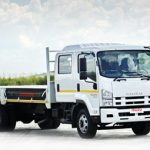

 Big news from FOCUS on Transport + Logist
Big news from FOCUS on Transport + Logist


 !
Starting 1 April, every
!
Starting 1 April, every


 FUSO: Driving the Future of Mobile Healthc
FUSO: Driving the Future of Mobile Healthc



 A brand
A brand




 Wondering about the maximum legal load for a
Wondering about the maximum legal load for a 
 The MAN hTGX powered by a hydrogen combus
The MAN hTGX powered by a hydrogen combus

 Exciting News for South African Operators
Exciting News for South African Operators


